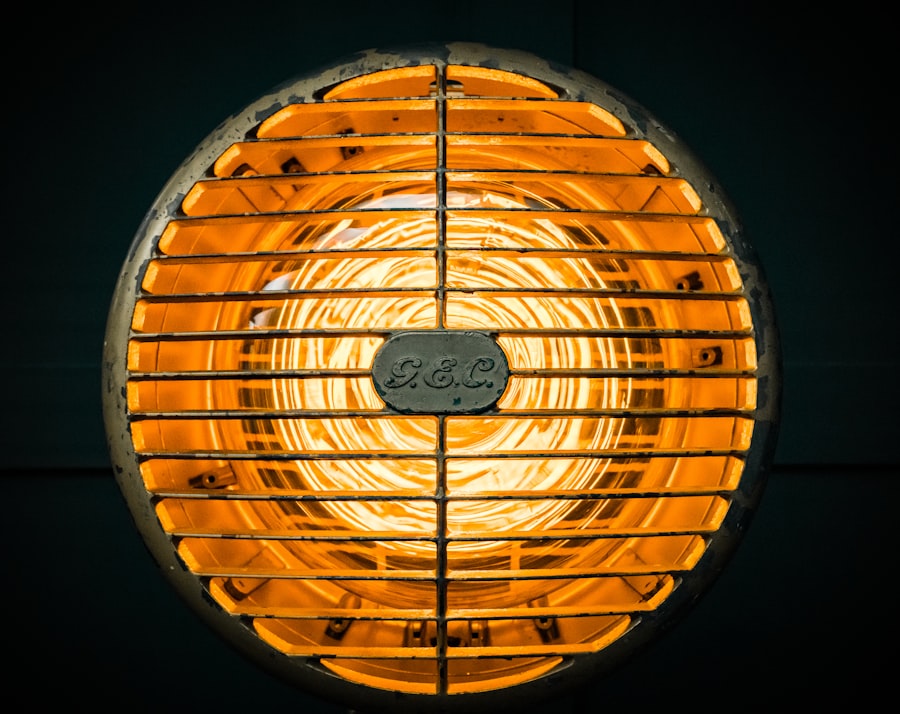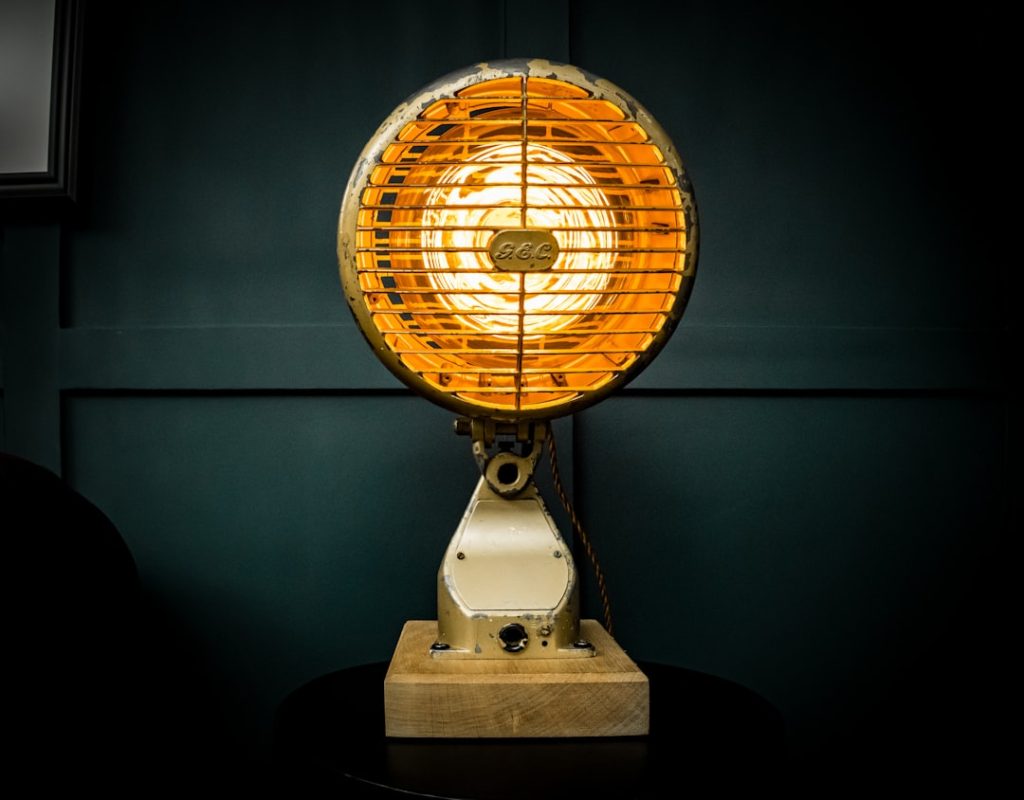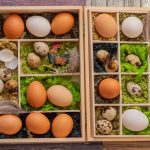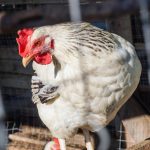Molting is a natural process in which poultry shed old feathers and grow new ones. This process is vital for maintaining the birds’ health, plumage, and thermal regulation, especially during colder seasons. Poultry owners must understand molting to provide appropriate care for their birds during this period.
During molting, chickens typically cease egg production and may exhibit reduced activity or lethargy. This is due to the reallocation of energy and nutrients towards feather growth, which can be physically demanding. Molting generally occurs in autumn, coinciding with shorter days and decreasing temperatures.
Recognizing this natural cycle allows owners to adapt their care routines accordingly. The duration of molting varies, ranging from several weeks to a few months, depending on factors such as individual bird characteristics and breed. Throughout this period, it is crucial to provide enhanced care to ensure the birds’ comfort and well-being.
This includes offering suitable shelter, additional bedding, nutritious feed, and proper ventilation to support the molting process. By comprehending the molting process and its effects on poultry, owners can ensure their birds receive the necessary support to navigate this natural cycle successfully.
Table of Contents
Key Takeaways
- Molting is a natural process where chickens shed old feathers and grow new ones, typically occurring once a year.
- Adequate shelter is essential during molting to protect chickens from harsh weather and potential bullying from other flock members.
- Adding extra bedding to the coop can provide comfort and insulation for molting chickens.
- Heat lamps or heaters can help maintain a comfortable temperature for molting chickens, especially during colder months.
- Providing nutritious feed high in protein and essential nutrients can support healthy feather regrowth during molting.
Providing Adequate Shelter
Protecting from the Elements
During the molting process, it is crucial to provide adequate shelter for poultry to protect them from the elements and help them stay warm as they grow new feathers. This can be achieved by ensuring that the coop or housing structure is in good condition and free from drafts or leaks. Additionally, providing a dry and clean environment is essential for the health and well-being of molting birds.
Maintenance and Repair
It is important to inspect the coop regularly to identify any areas that may need repair or reinforcement. This can include patching up holes or gaps in the walls, repairing damaged roofing, and ensuring that doors and windows are properly sealed. By providing a secure and weatherproof shelter, poultry owners can help their birds stay comfortable and protected during the molting process.
Optimizing Coop Layout and Design
In addition to maintaining the physical structure of the shelter, it is important to consider the layout and design of the coop to ensure that it provides adequate space for molting birds. This can include providing roosting bars at different heights to accommodate birds with varying degrees of feather loss, as well as creating separate areas for nesting and feeding to reduce competition and stress during this sensitive time. By providing adequate shelter for molting poultry, owners can help their birds feel safe and secure as they go through this natural process.
Adding Extra Bedding

During molting, poultry will shed a significant amount of feathers as they grow new ones, which can make them more susceptible to cold temperatures. To help them stay warm and comfortable during this time, it is important to add extra bedding to their shelter. This can include materials such as straw, hay, or wood shavings, which provide insulation and help regulate the temperature inside the coop.
By adding extra bedding, poultry owners can create a soft and cozy environment for their birds to rest and recover during the molting process. This can also help prevent injuries or discomfort caused by bare or hard surfaces, as molting birds may be more sensitive due to their changing plumage. Additionally, providing ample bedding can help absorb moisture and odors, creating a cleaner and more hygienic living space for the birds.
It is important to regularly clean and replace bedding during molting to maintain a healthy environment for the birds. This can help prevent the buildup of bacteria or parasites that may thrive in damp or soiled bedding, which can pose a risk to the birds’ health. By adding extra bedding and maintaining cleanliness in the coop, poultry owners can support their birds through the molting process and ensure that they have a comfortable and safe place to rest and recuperate.
Using Heat Lamps or Heaters
As poultry go through the molting process, they may be more sensitive to changes in temperature due to their loss of feathers. To help them stay warm and comfortable during this time, it may be necessary to use heat lamps or heaters in their shelter. This can provide supplemental warmth to compensate for their reduced insulation and help them regulate their body temperature as they grow new feathers.
When using heat lamps or heaters, it is important to place them at a safe distance from the birds to prevent burns or fires. Additionally, it is crucial to use equipment specifically designed for use with poultry to ensure that it is safe and effective for the birds. By providing supplemental heat during molting, poultry owners can help their birds stay comfortable and healthy as they go through this natural process.
It is important to monitor the temperature inside the coop regularly when using heat lamps or heaters to ensure that it remains within a safe range for the birds. This can be achieved by using a thermometer or temperature gauge to measure the ambient temperature and make adjustments as needed. By using heat lamps or heaters responsibly, poultry owners can provide the necessary warmth for their birds during molting without compromising their safety.
Providing Nutritious Feed
During molting, poultry require additional nutrients to support the growth of new feathers and maintain their overall health. It is important to provide nutritious feed that is high in protein, vitamins, and minerals to support their dietary needs during this time. This can include commercial poultry feed formulated for molting birds, as well as supplemental treats such as mealworms, sunflower seeds, or fresh fruits and vegetables.
By providing nutritious feed, poultry owners can ensure that their birds have the essential nutrients they need to support the molting process. This can help promote healthy feather regrowth, maintain strong immune function, and support overall well-being during this demanding period. Additionally, offering a varied diet can help prevent boredom and encourage healthy eating habits in molting birds.
It is important to monitor the birds’ feed intake during molting to ensure that they are consuming enough nutrients to support their growth and recovery. This can be achieved by observing their behavior at feeding times, as well as regularly checking their body condition to ensure that they are maintaining a healthy weight. By providing nutritious feed tailored to their specific needs during molting, poultry owners can support their birds’ health and ensure that they have the energy and resources they need to grow new feathers successfully.
Ensuring Proper Ventilation

Ensuring Adequate Airflow
To ensure proper ventilation, it is essential to provide adequate airflow without creating drafts or exposing the birds to cold temperatures. This can be achieved by installing vents or windows that can be opened or closed as needed to control airflow. Additionally, using fans or air circulation systems can help maintain consistent air quality inside the coop and prevent the buildup of harmful gases or airborne particles.
Regular Maintenance is Key
Regular inspection of the ventilation system in the poultry shelter is crucial to ensure that it is functioning properly and free from obstructions. This includes cleaning vents and fans regularly to remove dust or debris that may impede airflow, as well as checking for signs of condensation or mold that may indicate poor ventilation.
Creating a Healthy Environment
By ensuring proper ventilation in the coop, poultry owners can create a healthy and comfortable environment for their birds during molting. This, in turn, can help reduce the risk of respiratory issues and other health problems, ultimately leading to a successful molting process.
Monitoring and Adjusting as Needed
Throughout the molting process, it is important to monitor the condition of the birds regularly and make adjustments to their care routine as needed. This can include observing their behavior, physical appearance, and overall well-being to identify any signs of stress or health issues related to molting. Additionally, making changes to their diet, shelter, or environmental conditions based on their specific needs can help support them through this challenging time.
By monitoring the birds closely, poultry owners can identify any issues or concerns early on and take proactive measures to address them effectively. This can include providing additional support such as supplemental heat or extra bedding for birds that are struggling with feather loss or maintaining body temperature during molting. Additionally, adjusting their diet or feeding schedule based on their appetite and nutritional needs can help ensure that they have the resources they need to grow new feathers successfully.
It is important to be flexible and responsive in caring for molting poultry, as each bird may have unique requirements based on its breed, age, health status, and individual characteristics. By monitoring their condition closely and making adjustments as needed, poultry owners can provide personalized care that supports their birds through the molting process effectively. This can help ensure that they have a smooth transition through this natural cycle and emerge with healthy new feathers ready for the coming season.
In conclusion, understanding the molting process is essential for providing proper care and support for poultry during this challenging time. By providing adequate shelter, extra bedding, heat lamps or heaters, nutritious feed, proper ventilation, and monitoring their condition closely, poultry owners can ensure that their birds have everything they need to grow new feathers successfully. With careful attention and proactive measures, molting poultry can transition smoothly through this natural cycle and emerge healthy and ready for the coming season.
If you’re looking for tips on how to keep chickens warm after they have molted, you may want to check out this article on farmhouse chicken coop design. This article provides valuable information on creating a cozy and insulated environment for your chickens during the colder months, which can be especially important for chickens that have recently molted.
FAQs
What is molting in chickens?
Molting is the natural process in which chickens shed their old feathers and grow new ones. This typically occurs once a year and can last for several weeks.
How does molting affect a chicken’s ability to stay warm?
During molting, chickens may lose a significant amount of feathers, which can leave them more vulnerable to cold temperatures. This can make it more challenging for them to stay warm, especially during the winter months.
What are some ways to keep molting chickens warm?
To keep molting chickens warm, it’s important to provide them with a draft-free and well-insulated coop. Adding extra bedding, such as straw or wood shavings, can also help them stay warm. Additionally, providing supplemental heat sources, such as heat lamps or heated pads, can be beneficial.
Are there any dietary changes that can help molting chickens stay warm?
Feeding molting chickens a high-protein diet can help support the growth of new feathers and keep them warm. Consider adding protein-rich treats, such as mealworms or black oil sunflower seeds, to their diet during this time.
What are some signs that a molting chicken is struggling to stay warm?
Signs that a molting chicken may be struggling to stay warm include huddling with other chickens for warmth, appearing lethargic, or showing signs of distress. It’s important to monitor molting chickens closely for any signs of discomfort during cold weather.
Meet Walter, the feathered-friend fanatic of Florida! Nestled in the sunshine state, Walter struts through life with his feathered companions, clucking his way to happiness. With a coop that’s fancier than a five-star hotel, he’s the Don Juan of the chicken world. When he’s not teaching his hens to do the cha-cha, you’ll find him in a heated debate with his prized rooster, Sir Clucks-a-Lot. Walter’s poultry passion is no yolk; he’s the sunny-side-up guy you never knew you needed in your flock of friends!







